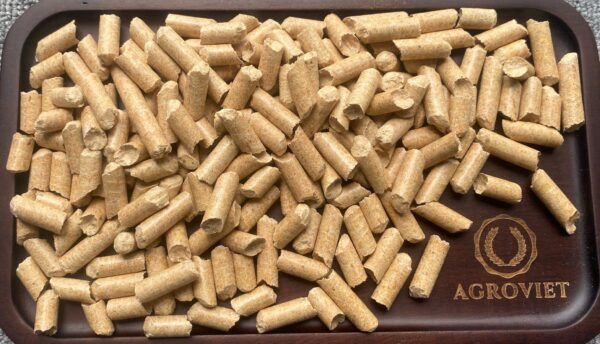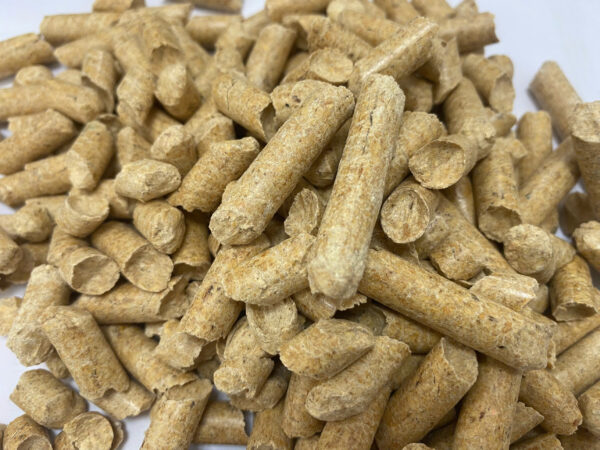As a cat owner, your pet’s safety and comfort are top priorities when choosing bedding or litter. With various options available on the market, it’s essential to understand the pros and cons of each. One increasingly popular option is pine wood pellets, known for their absorbency and natural odor control. But are pine wood pellets safe for cats as bedding? In this article, we’ll explore the benefits, potential concerns, and safety of using pine wood pellets for your feline friends.
1. What Are Pine Wood Pellets?

Pine wood pellets are small, compressed pieces of sawdust derived from pine trees. These pellets are typically used for fuel, animal bedding, and even cat litter. During the manufacturing process, the pine wood is kiln-dried to remove moisture and any potentially harmful substances, making it a safer option for pets.
The drying process is crucial because fresh pine wood contains natural oils called phenols, which can be harmful to cats and other small animals. However, the kiln-drying process eliminates these phenols, making the pellets safe for use as bedding or litter for your pets.
2. Are Pine Wood Pellets Safe for Cats?
Yes, pine wood pellets are safe for cats, provided they are kiln-dried. When properly processed, pine wood pellets do not pose any risks to your cat’s health. The phenols found in raw pine, which can cause respiratory issues, are effectively removed during the drying process, ensuring that the pellets are non-toxic and safe for your feline friends.
Many veterinarians and pet owners recommend using pine wood pellets as cat litter or bedding due to their safety and environmental benefits. Pine wood pellets offer several advantages, including natural odor control, high absorbency, and sustainability.
However, there are a few considerations to keep in mind when introducing pine wood pellets to your cat’s environment.
3. Benefits of Using Pine Wood Pellets for Cats

When it comes to cat bedding or litter, pine wood pellets offer a variety of benefits that contribute to your cat’s well-being and make maintenance easier for you. Below are some of the main advantages:
a. Natural Odor Control
Pine wood pellets are known for their natural ability to control odors. The natural oils found in pine wood help neutralize odors from cat urine and feces, keeping your home smelling fresh. Unlike chemical-laden products, pine wood pellets achieve this without the use of artificial fragrances, making them a healthier alternative for both your cat and your household.
b. High Absorbency
One of the standout features of pine wood pellets is their absorbency. When the pellets come into contact with moisture, they break down into sawdust, effectively trapping liquids and keeping the surface dry. This is especially beneficial for cat litter boxes, as it prevents puddles of urine from forming at the bottom of the box, which can lead to unpleasant smells and messy cleanup.
The absorbent nature of pine wood pellets also means that the bedding or litter lasts longer before needing to be replaced, saving time and money in the long run.
c. Eco-Friendly and Sustainable
Pine wood pellets are made from sawdust, a byproduct of the lumber industry. Instead of allowing this material to go to waste, it is repurposed into pine wood pellets, making them an environmentally friendly option for cat bedding or litter. These pellets are biodegradable, meaning they can be composted after use, reducing the environmental impact compared to synthetic cat litters.
Additionally, the production of pine wood pellets requires minimal processing, energy, and water, making them a sustainable choice for eco-conscious pet owners.
d. Dust-Free and Hypoallergenic
Cats with allergies or respiratory sensitivities can benefit from pine wood pellets because they produce minimal dust. Traditional clay-based cat litters often create a lot of dust, which can irritate your cat’s respiratory system and lead to sneezing or coughing. Pine wood pellets, on the other hand, are virtually dust-free, providing a healthier environment for both your cat and you.
This low-dust feature makes pine wood pellets especially suitable for households where cleanliness and air quality are a priority.
4. Potential Concerns with Pine Wood Pellets for Cats
While pine wood pellets offer numerous benefits, there are a few potential concerns to keep in mind:
a. Texture and Comfort
One of the primary concerns when using pine wood pellets as cat bedding or litter is the texture. The pellets are firmer and more granular than traditional cat litter, which some cats may find uncomfortable under their paws. Cats are creatures of habit, and sudden changes in their litter texture may lead to them avoiding the litter box altogether.
However, many cats do adapt to pine wood pellets after a short adjustment period. If your cat seems hesitant to use the new bedding or litter, try mixing the pellets with their usual litter and gradually increase the ratio of pine wood pellets over time. This slow transition can help your cat become accustomed to the new texture.
b. Tracking and Cleanup
When pine wood pellets break down into sawdust after absorbing moisture, they can be tracked out of the litter box or bedding area. This can create a bit of mess around your home. Fortunately, using a litter mat near the litter box can help reduce tracking. Regular spot cleaning can also prevent excessive sawdust buildup.
c. Clumping vs. Non-Clumping
If you’re considering pine wood pellets as a cat litter, it’s important to note that they are non-clumping. Unlike traditional clay litter that forms clumps around urine, pine wood pellets break down into sawdust when wet. Some cat owners prefer the clumping action of clay litter for easier scooping, while others prefer the odor control and eco-friendliness of pine wood pellets, despite the difference in cleanup.
If your cat is accustomed to clumping litter, you may need to adjust your cleaning routine with pine wood pellets. Simply scoop out the solid waste daily, and stir the remaining pellets to redistribute moisture evenly. Once the majority of the pellets have broken down into sawdust, it’s time to replace the entire batch.
5. How to Safely Use Pine Wood Pellets for Cats
If you decide to switch to pine wood pellets for your cat’s bedding or litter, it’s essential to do so correctly. Here are a few tips to ensure a smooth transition and safe usage:
a. Gradual Transition
As mentioned earlier, cats are creatures of habit, and a sudden switch to pine wood pellets may cause them to reject their litter box. To avoid this, transition gradually by mixing the pine wood pellets with your cat’s current litter. Start with a small amount of pine wood pellets and increase the ratio over time until your cat becomes accustomed to the new texture and scent.
b. Keep the Litter Box Clean
Pine wood pellets are highly absorbent and offer excellent odor control, but it’s still important to maintain a regular cleaning schedule. Scoop out solid waste daily, and remove any wet sawdust as needed. Replace the entire litter or bedding every 1-2 weeks to ensure your cat’s environment remains fresh and clean.
c. Monitor for Allergies or Sensitivities
While pine wood pellets are generally hypoallergenic and safe for cats, it’s always a good idea to monitor your cat for any signs of allergies or sensitivities when introducing new bedding or litter. If your cat shows signs of discomfort, such as excessive sneezing, coughing, or skin irritation, discontinue use and consult your veterinarian.
6. Conclusion: Are Pine Wood Pellets Safe for Cats as Bedding?

In conclusion, pine wood pellets are safe for cats as bedding or litter, as long as they are properly processed and kiln-dried to remove harmful phenols. Pine wood pellets offer numerous benefits, including superior odor control, high absorbency, and eco-friendliness, making them an excellent option for cat owners looking for a natural and sustainable solution.
While some cats may take time to adjust to the texture of pine wood pellets, the overall advantages make them a worthwhile consideration for your cat’s bedding or litter needs. With proper care and gradual introduction, pine wood pellets can provide a clean, safe, and comfortable environment for your feline companions.
